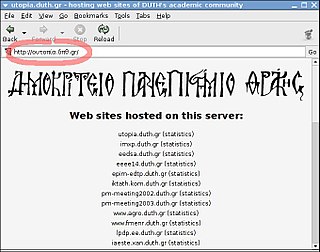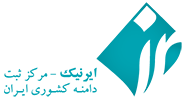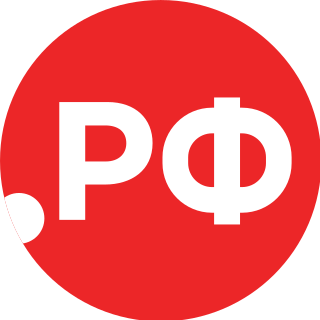The Domain Name System (DNS) is a hierarchical and distributed name service that provides a naming system for computers, services, and other resources in the Internet or other Internet Protocol (IP) networks. It associates various information with domain names assigned to each of the associated entities. Most prominently, it translates readily memorized domain names to the numerical IP addresses needed for locating and identifying computer services and devices with the underlying network protocols. The Domain Name System has been an essential component of the functionality of the Internet since 1985.

The Internet Corporation for Assigned Names and Numbers is a global multistakeholder group and nonprofit organization headquartered in the United States responsible for coordinating the maintenance and procedures of several databases related to the namespaces and numerical spaces of the Internet, ensuring the Internet's stable and secure operation. ICANN performs the actual technical maintenance work of the Central Internet Address pools and DNS root zone registries pursuant to the Internet Assigned Numbers Authority (IANA) function contract. The contract regarding the IANA stewardship functions between ICANN and the National Telecommunications and Information Administration (NTIA) of the United States Department of Commerce ended on October 1, 2016, formally transitioning the functions to the global multistakeholder community.

In the Internet, a domain name is a string that identifies a realm of administrative autonomy, authority or control. Domain names are often used to identify services provided through the Internet, such as websites, email services and more. Domain names are used in various networking contexts and for application-specific naming and addressing purposes. In general, a domain name identifies a network domain or an Internet Protocol (IP) resource, such as a personal computer used to access the Internet, or a server computer.
A domain name registry is a database of all domain names and the associated registrant information in the top level domains of the Domain Name System (DNS) of the Internet that enables third party entities to request administrative control of a domain name. Most registries operate on the top-level and second-level of the DNS.
The domain com is a top-level domain (TLD) in the Domain Name System (DNS) of the Internet. Created in the first group of Internet domains at the beginning of 1985, its name is derived from the word commercial, indicating its original intended purpose for subdomains registered by commercial organizations. Later, the domain opened for general purposes.

An internationalized domain name (IDN) is an Internet domain name that contains at least one label displayed in software applications, in whole or in part, in non-Latin script or alphabet or in the Latin alphabet-based characters with diacritics or ligatures. These writing systems are encoded by computers in multibyte Unicode. Internationalized domain names are stored in the Domain Name System (DNS) as ASCII strings using Punycode transcription.
A domain name registrar is a company that manages the reservation of Internet domain names. A domain name registrar must be accredited by a generic top-level domain (gTLD) registry or a country code top-level domain (ccTLD) registry. A registrar operates in accordance with the guidelines of the designated domain name registries.

.ee is the internet country code top-level domain (ccTLD) of Estonia, operated by the Estonian Internet Foundation.
.pl is the Internet country code top-level domain (ccTLD) for Poland, administered by NASK, the Polish research and development organization. It is one of the founding members of CENTR.
A country code top-level domain (ccTLD) is an Internet top-level domain generally used or reserved for a country, sovereign state, or dependent territory identified with a country code. All ASCII ccTLD identifiers are two letters long, and all two-letter top-level domains are ccTLDs.

.ae is the country code top-level domain (ccTLD) in the Domain Name System of the Internet for the United Arab Emirates. It is administered by .aeDA which is part of the Telecommunications and Digital Government Regulatory Authority of UAE (TDRA).
The Canadian Internet Registration Authority (CIRA) is the organization that manages the .ca country code top-level domain (ccTLD) for Canada. Its offices are located at 979 Bank Street in Ottawa, Ontario, Canada. CIRA sets the policies and agendas that support Canada's internet community and Canada's involvement in international internet governance. It is a member-driven organization with membership open to all that hold a .ca domain. As of March 2023, there were more than 3.3 million active .ca domains.

.tw is the Internet country code top-level domain (ccTLD) for Taiwan. The domain name is based on the ISO 3166-1 alpha-2 country code TW. The registry is maintained by the Taiwan Network Information Center (TWNIC), a Taiwanese non-profit organization appointed by the National Communications Commission (NCC) and the Ministry of Transportation and Communication. Since 1 March 2001, TWNIC has stopped allowing itself to sign up new domain names directly, instead allowing new registration through its contracted reseller registrars. As of May 2023, there are 17 registrars.

.ir is the Internet country code top-level domain (ccTLD) for Iran. It is managed by the Institute for Research in Fundamental Sciences.
In the Domain Name System (DNS) hierarchy, a second-level domain is a domain that is directly below a top-level domain (TLD). For example, in example.com, example is the second-level domain of the .com TLD.
Single-letter second-level domains are domains in which the second-level domain of the domain name consists of only one letter, such as x.com. In 1993, the Internet Assigned Numbers Authority (IANA) explicitly reserved all single-letter and single-digit second-level domains under the top-level domains com, net, and org, and grandfathered those that had already been assigned. In December 2005, ICANN considered auctioning these domain names.

The domain name .рф is the Cyrillic country code top-level domain for the Russian Federation, in the Domain Name System of the Internet. In the Domain Name System it has the ASCII DNS name xn--p1ai. The domain accepts only Cyrillic subdomain applications, and is the first Cyrillic implementation of the Internationalizing Domain Names in Applications (IDNA) system. The domain became operational on 13 May 2010. As of 2014 it is the most used internationalized country code top-level domain, with around 900,000 domain names.

Public Interest Registry is a not-for-profit based in Reston, Virginia, created by the Internet Society in 2002 to manage the .ORG top-level domain. It took over operation of .ORG in January 2003 and launched the .NGO and .ONG top-level domains in March 2015.

The domain names .ngo and .ong are generic top-level domains (gTLD) of the Domain Name System (DNS) used in the Internet, sponsored and managed by the Public Interest Registry. The backend is provided by Afilias. The .ngo domain name is an acronym which stands for "non-governmental organization", reflecting the intended usage of the domain.











